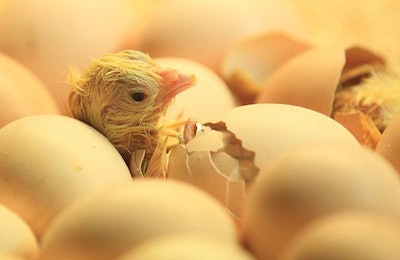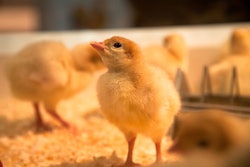
At the EuroTier International Poultry Event, “A blessing or a curse? What is the Respeggt Group’s view on the legal ban on chick culling?” presented on February 9 by Ludger Breloh, Ph.D., CEO of the Respeggt Group, explained that in Germany, after 2022, chick culling will not be allowed. “From 2024 onwards processes of gender identification may only be applied up to the sixth day of the incubation process,” he explained in his presentation.
Roughly 50% of the eggs that are eaten in Germany come from laying hens that hatched in the Netherlands. “The legal ban on chick culling in Germany doesn’t apply to the Netherlands, so that eggs coming from laying hens “with Chick Culling” that have hatched in the Netherlands are still marketable in Germany and that laying hens “with Chick Culling“ that come from the Netherlands may be housed in Germany,” the presentation explained.
German supermarkets have set goals much like the cage-free goals set by U.S. supermarkets.
The supermarkets plan to solely purchase eggs from supply chains that are free of chick culling by the end of 2022, both eggs produced in Germany and imported eggs.
Without additional actions, the legal ban on chick culling creates a reasonable disadvantage for supply chains with chicks that have hatched in Germany, as they need to pay mandatory additional costs for gender identification or for the fattening of male layer chicks, he explained.
Fattening male chicks
Breloh listed many issues with the fattening male chicks, a few of them are as follows:
- This would create an inefficient use of resources and increase the carbon footprint which leads to unsustainable production.
- No permanent capacities in barns to raise the birds.
- Prices for animal feed will soon begin to rise making the fattening process much more expensive.
- The meat is difficult to market and would potentially need exported.
- Per-capita equivalence for the fattening of male layer chicks would deceive consumers.
Conclusion
The fattening of male layer chicks will become more expensive due to lower barn capacities and higher feed prices.
“Processes of gender identification will become less expensive due to technical progress and economies of scale (estimated cost in the medium run: less than 1 cent per table egg),” he said.
If it will not be forbidden to only have per-capita equivalence in the fattening of male layer chicks, Breloh expects the following outcomes:
- Chick production will shift even more to the Netherlands.
- Egg production in Germany, with chicks that have hatched in Germany, will be more expensive than egg production in the Netherlands.
Breloh said, “It won‘t be possible to end chick culling by 2024 if you solely use the fattening of male layer chicks.”

















